YULIA IOSILZON
Dive into Yulia Iosilzon’s fantastic world
The TwentyFour Six presents the Artist’s Series. Every two months, we invite an artist to make an exclusive work for the platform. Our inaugural feature is Yulia Iosilzon, a breakout young artist pushing the boundaries between fantasy and reality with bold colors.

In the heart of London's thriving art community, Yulia Iosilzon, a talented young artist with a unique blend of Russian-Israeli heritage and an array of influences, welcomed us in her bright studio.
In the heart of London's thriving art community, Yulia Iosilzon, a talented young artist with a unique blend of Russian-Israeli heritage and an array of influences, welcomed us in her bright studio.
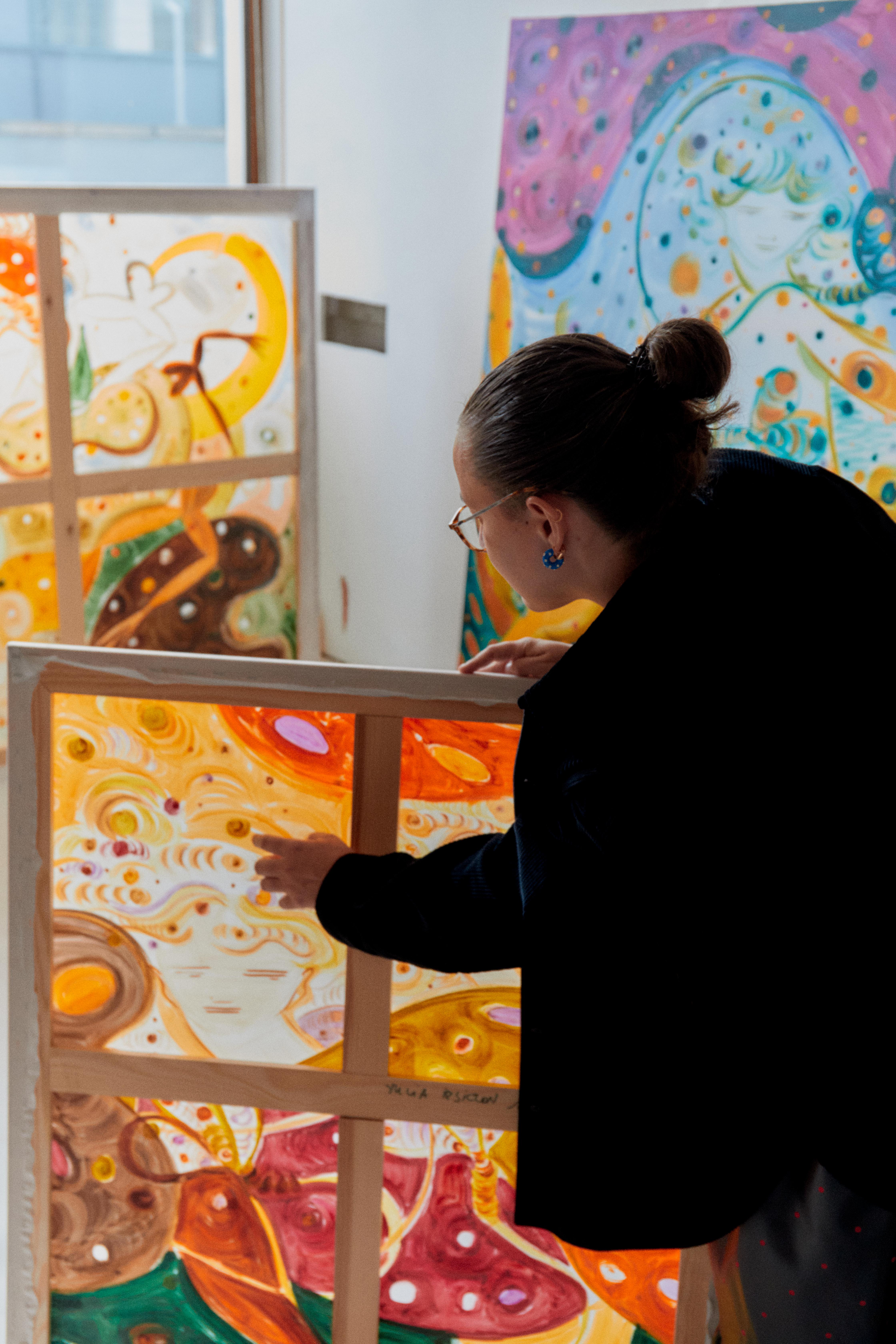
Blending Figuration with Color and Form
Ethereal. Imaginative. Mythological. Joyous. Whatever words you use to describe it, Yulia Iosilzon's art inspires beautiful expressions. Born in Moscow, she spent her formative years in Israel and came of age as an artist in London, where she's now based. She earned a BA in Fine Art at Slade School of Art and followed it up with an MA degree at London's Royal College of Art. A series of highly buzzed-about solo and group exhibitions soon followed, and the young artist seems poised on the cusp of more breakout success.
While her artistic explorations initially started with sculptures, Yulia soon found her preferred medium: painting on transparent silk canvases. Whatever medium she works in, the same cleverness and captivating storytelling seem to shine through. The foundations of her practice are still very evident in her work as she includes ceramics in her oeuvre, as well.
Yulia's work is not only about paintings; it's a performance that weaves together colors, playful geometric forms, and serene faces with dream-like expressions.
Introducing the TwentyFour Six's Artist's Series.
Introducing the TwentyFour Six's Artist's Series.
For the inaugural interview and collaboration, we explore Yulia's creative process and check out her latest work, made exclusively for us. We celebrate the first encounter with a conversation that takes place on a light, sunny afternoon.
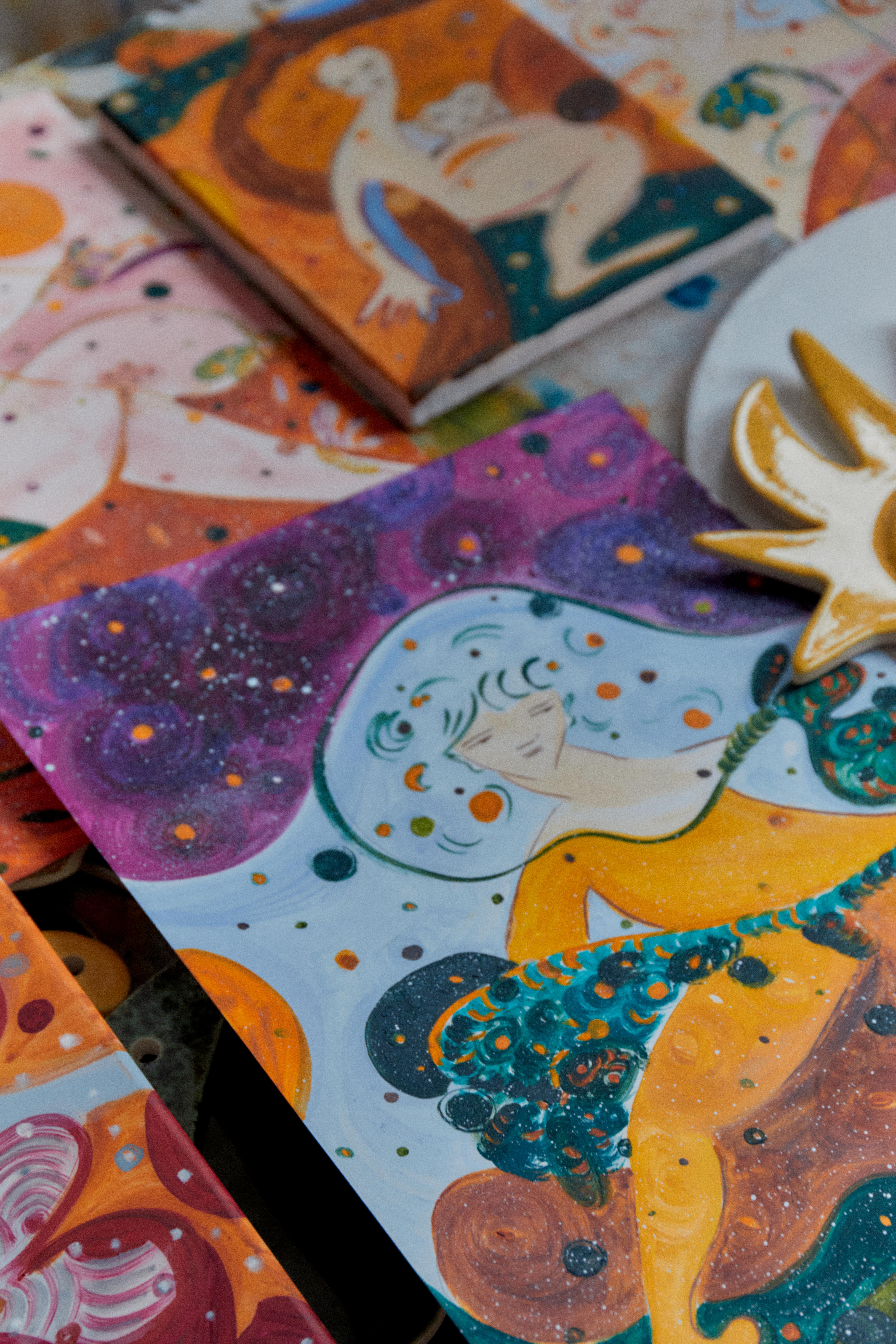
How do you describe your creative process?
Most of the time, I tend to start with a few sketches that I make just to see the composition and how geometrical forms evolve into one geometric sequence. Then I jump onto the smallest scale painting, from which I can see how the colors sit on the surface, and how I could shift, and add different levels of opacity and saturation to them. Colors are really important in my work.
Once I have shapes and forms from my sketches and the colors from the small paintings, I can unfold the whole composition with colors and forms on a bigger scale. I use movement when I approach the bigger scale painting which I find much easier. It's really important for my work to have this sort of movement, to have breadth. That's something that I've been exploring a lot.
There's a sense of physicality to my work. When I look at it, I see it as a performance rather than a painting.
There's a sense of physicality to my work. When I look at it, I see it as a performance rather than a painting.

What do you want viewers to understand through your art?
As a medium, painting is such an amazing form of expression. It's really giving, and it's quite performative. Within my work, I'd say that different memories just arise from my heart, in retrospect, or from discovering something new is an important part when I make them.
It's the movement and how I orchestrate different creatures and different things in my paintings. It could bring out different memories from the viewer, depending on who's looking, depending on what background people have, and how deeply they can dive into the world of imagination and the world of dreams. Different things that they might have seen or they might have any thoughts about.

It always depends on who's looking.
It always depends on who's looking.

The facial motif is something that appears often in your art. We see it on the ceramic sculpture you made for The TwentyFour Six. Where does this come from?
When you look at the early centuries of Japanese calligraphy, you will find these faces. The main thing is the facial expression. It excited me to see the still image of a face expression, and that exact serenity that face could bring. It has to be serene, it has to be calm, It has to bring, I don't know, like an ocean serenity.
The serenity and movement that just goes within itself that comes from Japanese calligraphy is something that still travels with me within my practice from one painting to another.
The serenity and movement that just goes within itself that comes from Japanese calligraphy is something that still travels with me within my practice from one painting to another.

For The TwentyFour Six, you made a beautiful series of ceramic suns. Why a sun?
I made the sun, because the sun has so many connotations throughout history, throughout the paintings on so many people.
The first idea about the object that I wanted to make came up when I was thinking about Hieronymus Bosch paintings. I always loved how he could bring life out of any subject in any of his works. But I never look at just one reference. I always try to find something that could bring me to the object that I'm feeling particularly interested in, also from other practices, other painters, and other artists. Therefore I was also looking at the Italian Renaissance painters, especially Giotto and Pierro della Francesca.
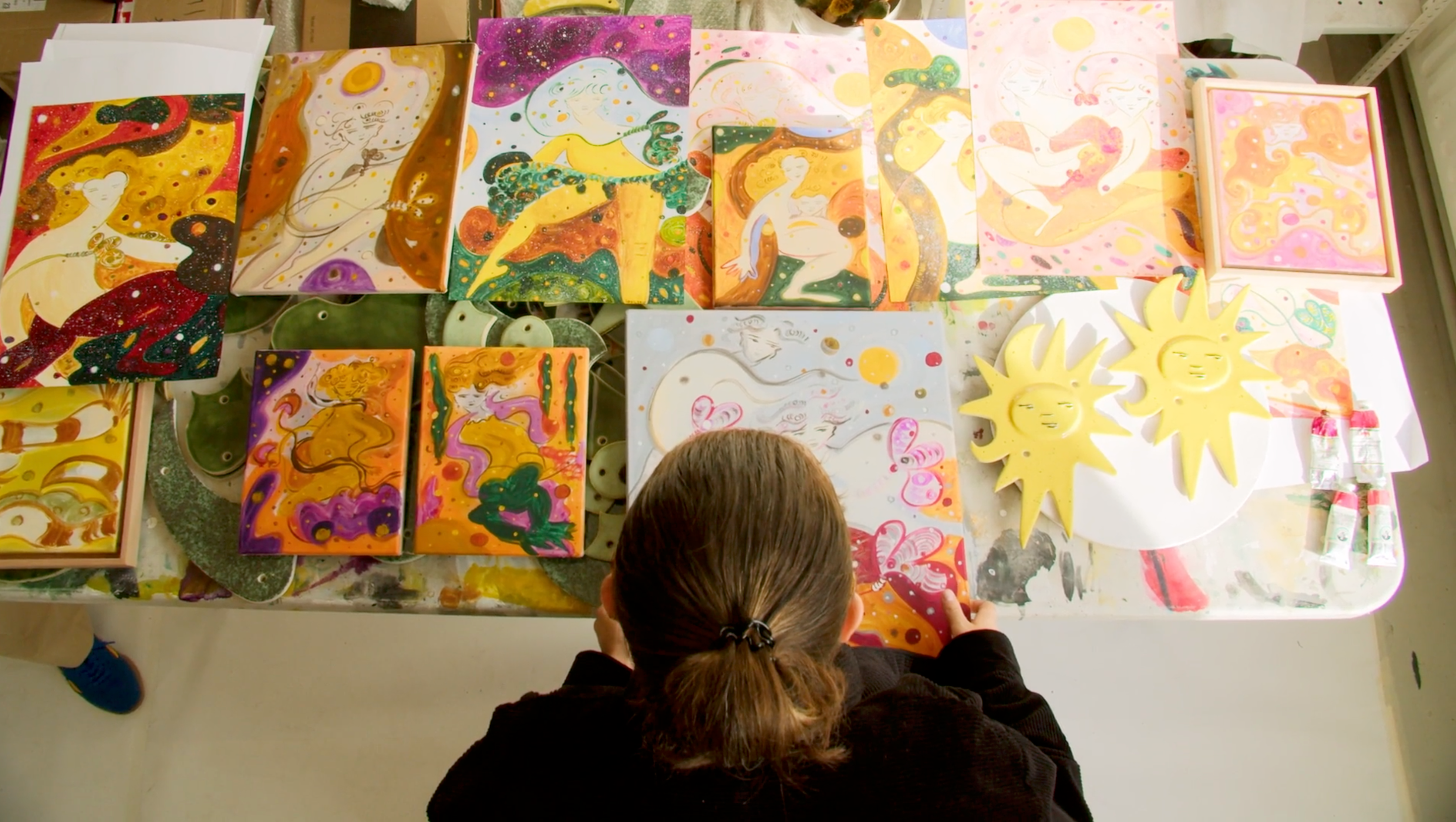
I was thinking of doing something that we would all have an association with, but at the same time that I could bring something new to it. I really wanted to make the sun not just being an object. I'd rather wanted to give it some motion so that you could really wrap your eyes around it as if it's a vicious circle.
I was thinking of doing something that we would all have an association with, but at the same time that I could bring something new to it. I really wanted to make the sun not just being an object. I'd rather wanted to give it some motion so that you could really wrap your eyes around it as if it's a vicious circle.

For all the fine arts, like painting, writing, or acting, do you think creativity can be taught?
I think that the only thing that makes a huge difference is your inner fire that you have inside yourself, your inner motivation, and your inner child. Those factors, once you have them all combined, could bring you to new ways of expressing your creative motions and your creative spirits.
It has to be exciting, it has to be something that really drives you anxious. If a project doesn't seem scary to me, I don't seem to be super excited about it. So you always have to be scared to start a painting or to start a project. That's probably why I love big-scale paintings.
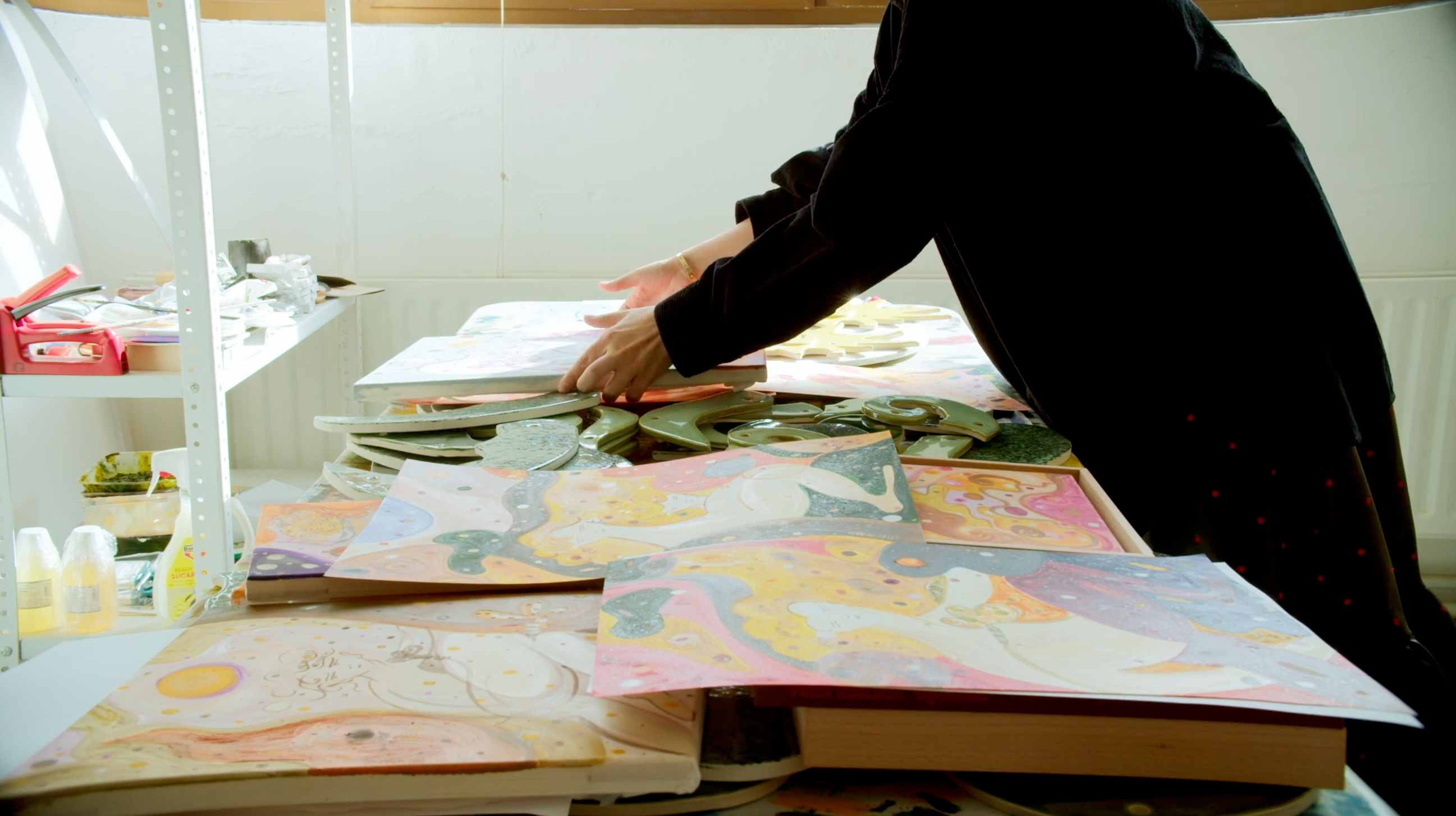

Are there artists whom you return to again and again for inspiration and study?
I get inspiration from different people all the time. I think that every creative person needs to have a certain starting point. In my case, my helper is always Philip Guston. I did a dissertation on him when I was doing my MA that really opened up the world of his paintings to me with the humor that he used within his works. There are also other artists that I admire and look at, Charline von Heyl or the sculptor Erwin Wurm. You see that in my works, I have a lot of fluid shapes and forms.
I look at painters and equally I look at sculptors. The sculptors, they do bring a sense of excitement to my works.
I look at painters and equally I look at sculptors. The sculptors, they do bring a sense of excitement to my works.
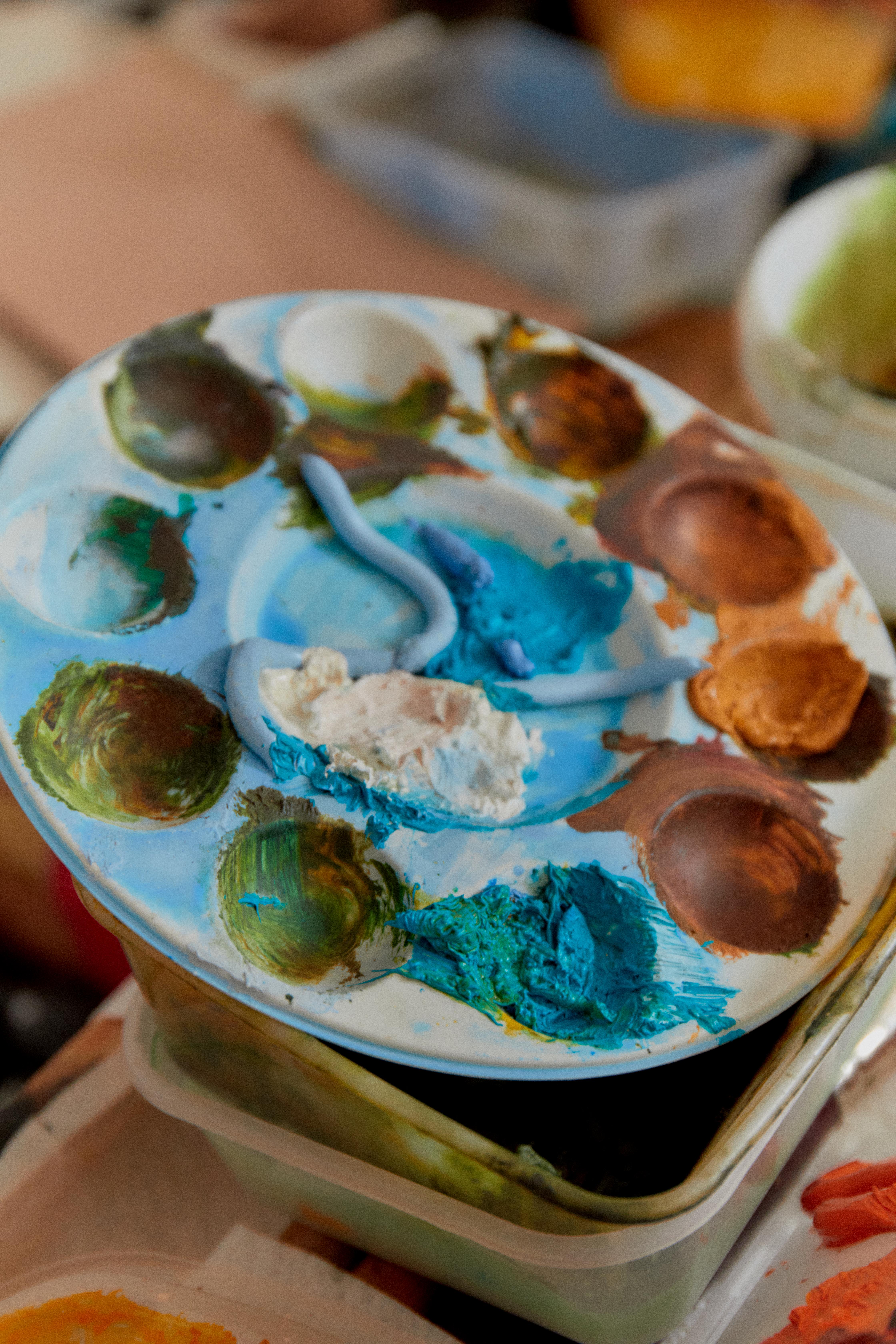
If you couldn't be an artist, could you imagine yourself doing something else?
I would definitely do something creative. Maybe short films for products. I would probably always need something to feed me creatively. Because I just think that you see the world differently. And you want something exciting, something fun, something refreshing, something that would excite you, make you want to paint, and make you want to buy something.
It's a journey. You travel together with your figures, shapes, and forms that you fill in your painting with. That's what brings your practice further and further. When you can make it exciting not just for the public, but for yourself as well.
It's a journey. You travel together with your figures, shapes, and forms that you fill in your painting with. That's what brings your practice further and further. When you can make it exciting not just for the public, but for yourself as well.
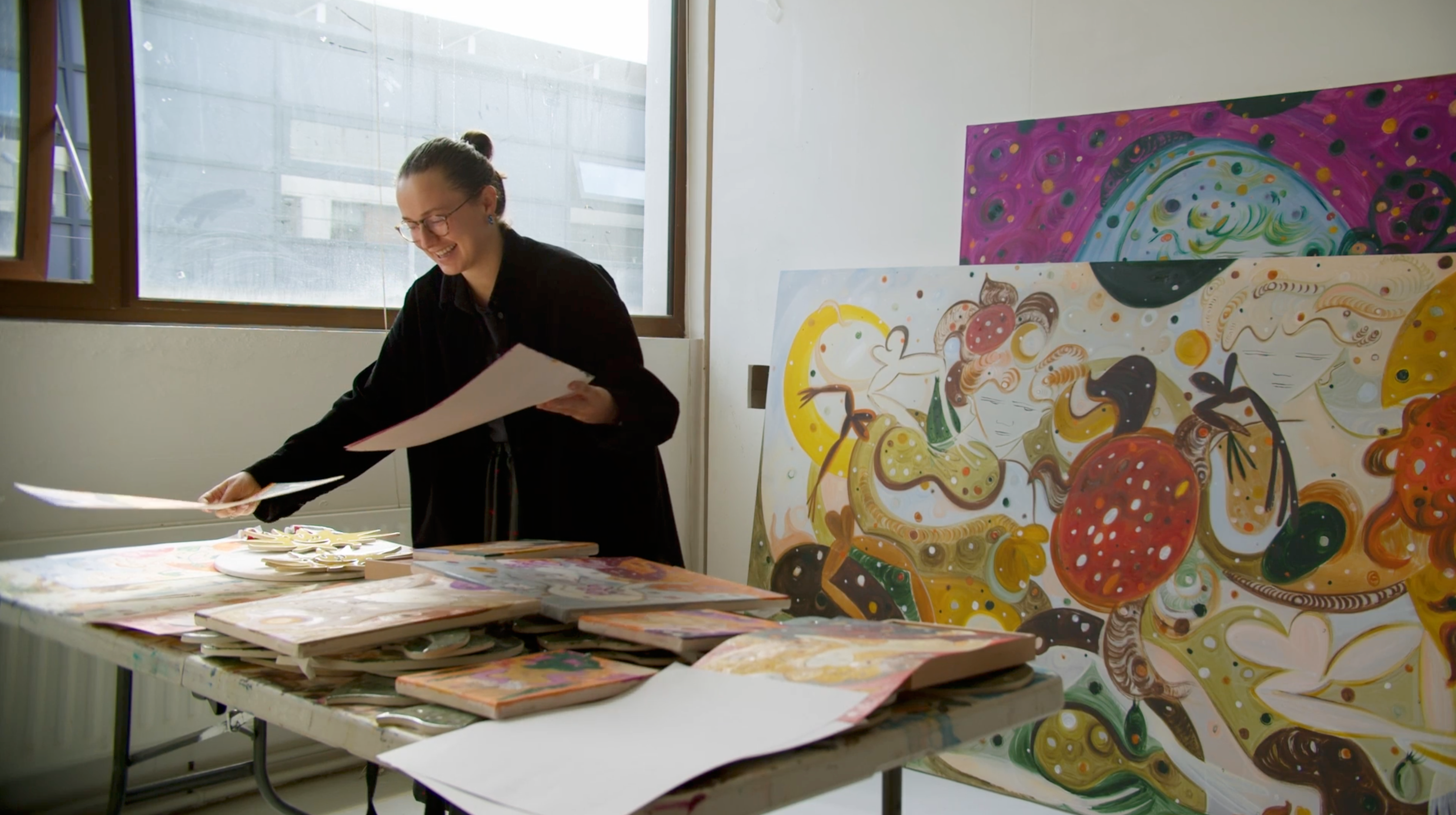
One last question that we always ask... because this is The TwentyFour Six. What do you do on your seventh day or your perfect day off?
One last question that we always ask... because this is The TwentyFour Six. What do you do on your seventh day or your perfect day off?
Just spending time with my family. Going to see some shows that I miss during the week because of being in my studio. Or I finish some administration. Mainly I'm just trying to enjoy this one day of the week that I have out of the studio.
